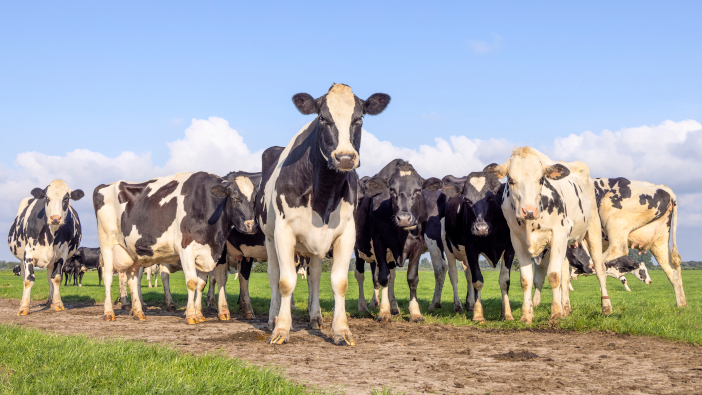Quality Meat Scotland (QMS) have reported that farmgate cattle and pig prices have reached a record high, whilst levels in the lamb market are falling below those seen in early 2021 and 2022.
Forecasts also indicate instability in supply and demand within the global red meat market in 2023, with increased trade flows required to bring markets back towards balance.
QMS market intelligence manager, Iain Macdonald, said: “Set against slightly reduced world output, global beef demand is forecast to remain resilient despite economic headwinds, with consumption almost unchanged. For this to happen, mismatch between supply and demand at country-level means that global trade in beef will need to rise significantly.”
Beef
The United States Department of Agriculture (USDA)’s warning of a 0.3% reduction in global production of beef in 2023 contrasts with the projected 17% increase in Australia and expectations of 2-3% growth for Brazil, Mexico and China, along with a 1% rise in the UK.
The gains expected from these regions are in contrast with the USA’s predicted 6.5% fall in output, as well as smaller reductions in Argentina, New Zealand, Canada, Japan and the EU.
Mr Macdonald said: “Imports are set to reach 18% of global consumption in 2023, up from 17.7% in 2022 and well above the 16.1% level seen in the pre-pandemic year of 2019. The combination of a relatively tight global beef market and increased trade points to firm beef prices.
“China and Hong Kong will be the main drivers, with an expected 1.5% rise of import volumes as they reduce covid restrictions domestically and re-open to overseas tourists and businesspeople. While China and Hong Kong are set to collectively account for more than 80% of the net increase in beef imports, tight supply is also projected to boost imports to the USA and Japan, while strong demand in Korea is expected to fuel a further lift in imports despite higher domestic output.”
Pork

Forecasts for global pork output show USDA estimates at 0.3% higher, reaching 114.1m. This would see the recovery from African Swine Fever in China and South East Asia continue, taking production almost 20% above its 2020-low. Consumption growth is predicted to surpass this, leading to a slight increase in global imports.
China is looking set to continue as a significant driver of global pork market conditions with a 48% share of world production, over half of global consumption and 21% of imports. However, uncertainty remains around the outlook in China, with the volatility of the market seen in recent years continuing into 2023. Pork prices in the country doubled between April and October 2022, but then swiftly declined by 35% between November and late January. A rebound in imports has contributed to the change in market conditions, with monthly volumes picking up and managing to show year-on-year growth in December.
In other regions, forecasters predict rises in pork production for Brazil, Japan, Mexico, the USA and the Philippines in 2023, in contrast to declines in Canada, South Korea, the EU and the UK. Increases in consumption and imports are predicted, however, due to pork’s competitive pricing amidst the rising cost of living.
Mr Macdonald said that, despite China’s secure position in global importing prior to the African Swine Fever crisis, all other countries are still likely to be 8% higher than in 2018
Lamb
The USDA do not cover global lamb market conditions, however Mr Macdonald reported that UK lamb production is predicted to rise this year. He added: “At EU level, the EU Commission has forecast a slight uplift in production for 2023 but, with consumption projected to rise by 1%, a 4% lift in imports is modelled, and this should help support UK exports.”
Revised expectations for New Zealand’s lamb production in the October 2022 to September 2023 season have been reported by Beef + Lamb New Zealand due to a poor lambing. The lamb crop is estimated to have decreased by 2.6%. However, slaughter statistics point to a strong start to the processing season, with the kill up nearly 13% year-on-year through October and November, driven by a return to a more normal marketing pattern after a delayed schedule in 2021-22.
New Zealand lamb export volumes fell by 2.6% in Q4 2022 compared to the same period in 2021. Moving through to this year, New Zealand lamb prices continues to look competitive, with farmgate prices around 20% lower than in early 2022.
Meat and Livestock Australia are predicting that the market will recover from the 2023 drought as good grazing conditions boost producer confidence, despite softer farmgate prices. The other side to reduced farmgate prices is export competitiveness and, coupled with higher availability and tight supply in New Zealand, this points to Australia’s lamb processors becoming more active in export markets in 2023.
Mr Macdonald concluded: “It should be noted that Australia’s lamb shipments to the UK are restricted by a tariff-rate quota and, due to firm sales in 2022, any further increase in 2023 is likely to depend on the free trade agreement between the UK and Australia entering force and expanding tariff-free quota access.”


